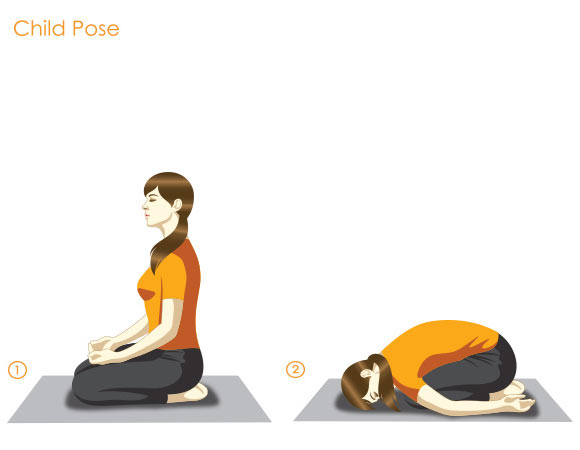
Yoga is an ancient form of exercise that is very beneficial to people with diabetes. For those with this condition, maintaining healthy blood glucose levels is essential. Finding a diet and exercise routine that you can stick to is difficult. A new study shows that yoga may be able to help with these problems. It can assist with weight loss, boost energy levels, improve sleep quality, and improve mood.
It is well-known yoga can improve the health and wellbeing of diabetics. Particularly, yoga can help to manage blood sugar. It is also able to reduce the risk of diabetes related neuropathy, a condition in which nerves are damaged. This disease can be reduced by regular yoga practice. If you are looking for a way to start practicing yoga, you should find a trained instructor. YouTube offers videos that can show you how to begin a class if you are not sure.

Yoga can be a great option to manage type 2 diabetes. As mentioned, certain yogasanas can activate your pancreas, which produces insulin. Grand Master Akshar suggests five asanas to help you manage your diabetes. The Urdhva Mukhi Marjari Asana requires you to bend your knees beneath your shoulders. Adho Mukhi Marjari is the second, where you lower your chin to your chest. The navel should be your focus in this position.
You can also stretch out your abdominal muscles while performing the poses. This can help improve digestion and flush out toxins. If you practice yoga regularly, you may also find it beneficial for weight loss. If you are diabetic, ensure that you do this exercise at the very least once a week. These benefits can be immense. Below is a list that will help diabetics to understand the benefits of yoga. When you are considering taking up yoga, please consider the following points.
Ardha Matsyendrasana is a great pose for those with diabetes. It works by relaxing the body and lowering blood sugar. This pose will help you to maintain your energy levels. You will be surprised by the benefits of this exercise. This activity is perfect for diabetics. These exercises can also be beneficial for those who are active.

Yoga offers many benefits. Yoga not only improves blood glucose levels but also improves overall health. It is recommended that you practice yoga two times a day: 40 minutes in morning and one hour at night. You should always practice yoga under the direction of a professional teacher. You can also do it at home. If you have patience and the time, you can soon do it all your life.
FAQ
Which is the best order to exercise?
It all depends on what you're looking for. First, lift heavy weights if you are looking to increase muscle mass. Next, move on to cardio. If you are looking to lose weight, then move on to strength training.
Cardio can be done if you want to just lose fat. Then add strength training after.
Do cardio first if you are looking to increase muscle mass. It stimulates growth hormones that help build muscle mass.
It is important to eat before going to work out. This will give your muscles more fuel, so they work harder. Plus, it makes you feel better during your workout.
How many calories do I need to eat each day?
It varies from one person to another. An average person needs 2000-2500 calories per day. Based on your age, gender, height and activity level, you will need to calculate how many calories you require.
Does weightlifting burn more fat than other forms of exercise?
You can lose more fat by weight lifting, but only when you do it in conjunction with cardio.
To maximize the benefits of weightlifting, you need to perform it after cardio workouts.
If done correctly, weightlifting can increase your heart rate and oxygen intake which in turn helps you lose weight.
But if you do not combine it with cardio, you will not see any significant changes in your body composition.
Statistics
- According to the American Heart Association, blood pressure should be checked at least once every two years, beginning at age 20. (my.clevelandclinic.org)
- According to the American Academy of Dermatology (AAD), men over 50 are at a heightened risk of developing it. (healthline.com)
- Get free shipping and 25% off today. (healthline.com)
- An estimated calorie range for moderately active adult males falls between 2,200 to 2,800 calories per day, depending on age. (eatright.org)
- The PRS enabled risk stratification for overall prostate cancer and lethal disease with a four-fold difference between men in the highest and lowest quartiles (HR, 4.32; 95% confidence interval [CI], 3.16-5.89). (pubmed.ncbi.nlm.nih.gov)
External Links
How To
What nutrients does a person need every day?
Daily nutrition is essential for men's healthy growth. The body requires vitamins, minerals, proteins, carbohydrates, fats, water, fiber, and other essential elements.
You also need specific nutrients for different times in the day. You can see that your body uses energy to make hormones. Protein is needed to build muscles and repair tissue damaged when you wake up.
Your body stores extra energy as glycogen and breaks down fat at night. Your body still requires sufficient nutrients and calories even though it needs less calories. You might have an occasional snack during the night if your stomach is feeling hungry.
To fuel your muscles while you train, you will need sufficient carbs as well as protein. You may feel sore muscles if you exercise hard.
To prevent this from happening, you need to consume carbs or protein within two hours. Your body will use stored glycogen to produce glucose for energy.
Also, protein must be consumed immediately after your workouts. This prevents muscle tissue being destroyed while you're sleeping.
Your body can produce lactic acid during intense physical activity. The body produces lactic acid when there is too much activity. This can cause fatigue. You can avoid this by eating carbohydrates-rich foods like fruits and veggies.
Carbohydrates can give your body the energy it requires to recover from intense exercise.
Additionally, lean meats, fish and eggs, dairy products, yogurt, cream, cheese, yogurt and beans can be added to your diet.
All of these foods contain high quality protein. Protein helps to repair and grow muscles. Protein provides the amino acid your body needs for testosterone and sexhormone production.
To maintain healthy skin, hair, and joints, you also need sufficient dietary fats. Healthy men need between 20% - 35% of the total caloric intake to be fat.
Fat helps protect your heart health and prevents cancer. It is essential for proper brain function.
Vegetable oils such as sunflower oil and soybean oil can provide most of your fat needs.
These oils are high-in monounsaturated, unsaturated fatty acid (MUFAs). MUFAs help lower cholesterol and reduce inflammation. They protect your cells from damage by free radicals.
Saturated fats (SFAs) are found mostly in animal products like meat, dairy products, and butter. SFAs are known to raise LDL ("bad") cholesterol and raise triglycerides. They also promote weight gain and belly fat.
Plant-based fats such as vegetable oils, seeds, nuts and grains contain polyunsaturated (PUFAs). PUFAs improve cardiovascular function and decrease inflammation. They help to control blood sugars and cholesterol.
Low HDL ("good") cholesterol is a common cause of erectile dysfunction in men. The consumption of saturated fats raises bad cholesterol which in turn lowers good cholesterol.
Men who eat lots of red meat or pork can develop prostate problems. This is because these foods contain high amounts of nitrates. If cooked at high temperatures, the nitrates become nitrosamines. These compounds cause cancer.
Nitrites and other harmful chemicals are common in processed meats. Avoid them.
The American Heart Association recommends eating no more than 2 servings of red meat per week. Instead, choose poultry, fish, legumes, tofu, whole grain bread, and cereals.